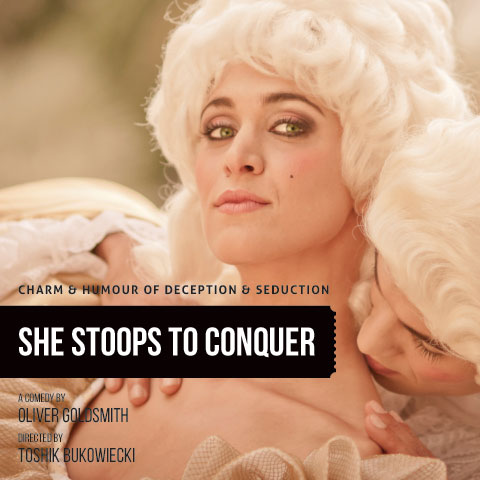

A particularly witty young lady takes her marital future in hand, using all the creative misdirection at her disposal - and there’s a lot. It’s not summer at APT without a fit-to-split comedy, and this is among the best of its brand. Equity & Anti-Racism Vision & Action Plan.5 The pessimism of Hankin's continuation dwells on the unreal complexion of the Hardcastle-Marlow marriage, yet the comedy's happy ending is expressive of a. John Hankin in which the couple's afterlife sees Marlow assert his old sexual preference and insist that Kate wear an apron and thereby renounce her difference from a type. Nelson cites a sequel to She Stoops to Conquer by the Edwardian dramatist St. The omission lends itself to multiple readings. The play similarly does not linger to give substance to a conception of woman as person. As James Kim concedes in a recent article, Goldsmith never quite settles for one configuration of male gender practices.

James Evans is accordingly connecting dots that Goldsmith himself does not join up when he writes: "In She Stoops to Conquer Goldsmith imagines an alternative to extreme masculinities, a median between them." 3 Although Goldsmith demonstrates at length the unfitness for companionate marriage of the extremes of masculinity, he at most invites his audiences to imagine for themselves the median between them rather than offering up a fully delineated alternative. Goldsmith is prepared to accompany Marlow in his one-night crash course for companionate marriage, but no further.
SHE STOOPS TO CONQUER BY OLIVER GOLDSMITH HOW TO
To be exact, he does not so much go along with these attempts as he heads toward them, only then to beg off in the face of diminishing comic returns (a happy couple's happiness is rarely something that it knows how to share). Instead of deflating the self-mythologizing of the bourgeoisie, he goes along with its attempts to define itself, in flattering contradistinction from other classes and estates, in terms of the virtues of a humane sociability rather than in terms of the sober realities of economic power and political status. Certainly it is from the ideal's non-realized condition that Goldsmith derives his preferred comic effects. If the play's conclusion appears to buy into this myth of the bourgeoisie's endemic talents for companionate marriage, the preceding scenes not only decline to make light of the legwork needed to render a bourgeois wife visible, they even magnify it. Goldsmith's coyness on this point suggests that his interest lies not so much in realizing this ideal of bourgeois marriage (Kate's bickering parents, the one married couple to appear on stage, are hardly candidates for its instantiation) than in tracking how, as a goal and endpoint, it overtaxes and confounds his characters. 2 Their marriage might therefore pass for proof in miniature of the bourgeoisie's self-ascribed capacity to sublate the antithesis between culture and nature, insofar as Kate brings about in Marlow both a civility that is neither hypocritical nor listless and a natural simplicity that is neither brutish nor unworldly, although the curtain drops before that is put to the test. She ultimately reconciles in him the polite gentleman and the shameless rake by making him see in her a person to respect as well as a body to desire.

If she is to take on the aspect of a marriageable woman, Kate Hardcastle has to position herself at the intersection-has to create for herself this intersection-of the two class-bound fields of vision in which Marlow surveys women. 1 Oliver Goldsmith's comedy, like Richard Wagner's Tannhäuser (1845) (the opera we have in place of his projected dramatization of Luther's wedding), is an object lesson in learning to see a bourgeois wife. The play ends with the proclamation of a wedding the following day when Charles Marlow is to take as his wife the woman he previously considers unmarriageable because she appears to him, alternately, the focus of too great a reverence and the mere quarry of a passing and socially inconsequential passion. And that should be enough to put us on our guard. It celebrates it without being able to represent it. At least as far as its central couple is concerned, She Stoops to Conquer: Or, The Mistakes of a Night (1773) is a celebration of bourgeois marriage.


 0 kommentar(er)
0 kommentar(er)
